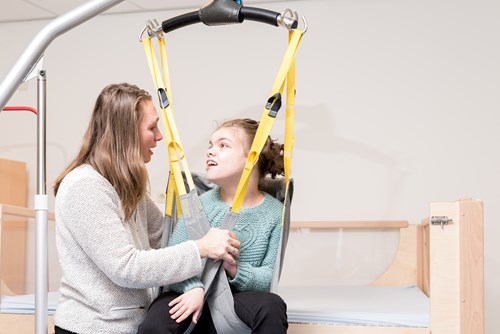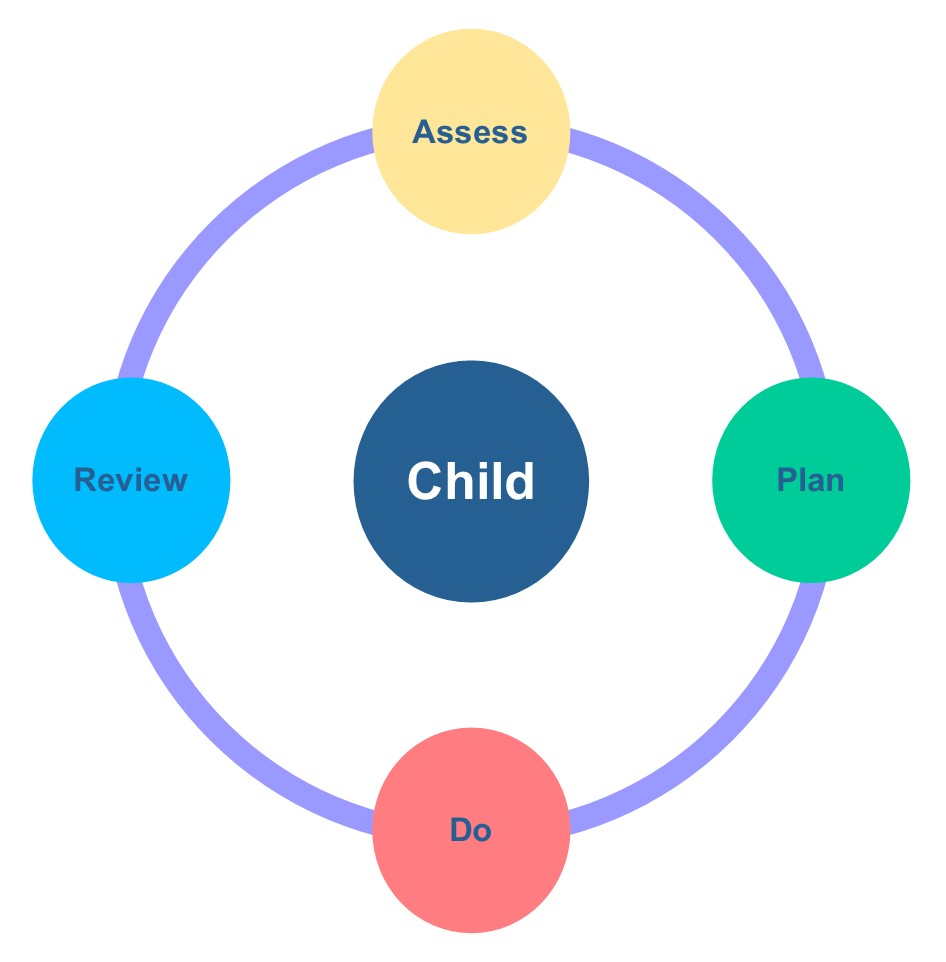Intervention and monitoring for children with speech, language and communication needs

If you have assessed a child’s language development and recognised that there is a delay, you must take appropriate action to support the child accordingly.
Depending on how much of a delay is evident, you can choose to either:
- Plan and monitor some specific support for the child over the next term and see if this helps them to progress
- Refer the child for a speech and language therapy assessment. If this is your course of action, you will still need to plan some support for the child, whilst they wait for an appointment
The following process reflects the Assess, Plan, Do, Review graduated approach, required by the government’s Special educational needs and disability code of practice: 0 to 25 years (updated April 2020).

Plan: How to decide what to do next
Look at your assessment evidence. What does it tell you about the child’s areas of strength and difficulty?
Discuss the situation with the child’s parents. How do they feel about their child’s communication skills and what are their priorities?
Is there anyone else involved in supporting the child, such as a health visitor, children’s centre worker or portage worker? If there is, with parental consent, make sure you get in touch with them, so you can share ideas and ensure a consistent approach.
Take a look at a communication profile tool, such as the Early Communication and Language: Child Monitoring Tool. Identify the area where the child is having the most difficulty and plan strategies and activities to support them within this area. These can be for the individual child, where you get down to their level, gain eye contact and use their name before speaking to them or they could form part of some small group work or play, such as sorting the home corner resources into ‘food’ and ‘non-food’ groups.
There are a number of different strategies you could use, including making changes to…
- The environment: Use more visual information or reduce background noise
- Routines: Have less waiting / lining up time and ensure a consistent member of staff changes the child’s nappy
- Resources: Use pictures to label toy boxes to help with sorting
- The practitioner’s communication: Comment on what the child is doing during play using only one or two words and give them ‘forced alternatives’, such as “would you like milk or water?” at snack time
- The experiences and opportunities offered to the child: Use puppets to support a reluctant speaker or include more outdoor play experiences, where this suits the child
Make sure your plan is clear about who will do what, how often and that it is shared with other members of staff who work with the child and, of course, the parents.
Do: Carry out your plan with the child
Implement your planned strategies and activities, ensuring you continue your observations and discussions, so you can see how the child is responding.
Review: Monitoring
Once you have put your plan into action, you will need to monitor what is happening. Is your intervention making a difference for the child?
Don’t forget that regular monitoring is really important, so remember to liaise with others involved in the plan, to see how effective your support has been. You should also refer to your observations and planned outcomes and consider any other colleagues or specialists, who might be able to provide additional assistance, before you begin the process again.
Local information and support
Herefordshire Council provides advice for early years settings around the steps to take, if you believe a child may have additional needs, along with contact details for the Early Years Team.
National information and support
Council for Disabled Children has created a SEN and Disability in the Early Years Toolkit, which is based on statutory requirements and guidance, and includes useful tools and reflective tasks for practitioners.
The Pen Green Centre has developed an online toolkit, which includes a number of useful practitioner recommendations, case studies and templates. It provides a celebratory approach to early years SEND assessments and can help you ‘to place the child at the centre and to celebrate their learning and development’, regardless of any additional needs they may have.
Number 5: Good practice
Adapting role play to develop communication skills:
In response to numerous children arriving in their reception class, speaking only 30 to 40 words, the school expected adults to model activities in their role play area. In the doctor’s surgery, for example, teachers played and pretended to be a doctor or nurse, modelling the kinds of questions that encourage children to respond.
The school filmed the role play and put it on an interactive white board, so children were continually exposed to the language and type of role play that staff expected. Children were able to copy, learn the vocabulary and then extend the role play using their creativity and imagination.
(Taken from Are you ready? Good practice in school readiness: Ofsted April 2014)
Number 5: Great idea
Dummies and soothers can be a source of comfort when children are upset or may form part of a sleep routine. However, they can contribute to delayed speech and language development, as well as affecting children’s teeth.
When children are sucking on a dummy, they will make fewer sounds, and if they attempt to talk around the teat, they may learn distorted patterns of speech. It is best to try and wean a child off the dummy by 12 months old.
A small pre-school made a special effort to discuss this issue with parents and used posters and leaflets from their local speech and language therapy department to provide more information. They also introduced visits from the ‘dummy elf’, to help children give up their dummies.
(Take a look at Herefordshire and Worcestershire Health and Care NHS Trust’s Children’s Speech and Language Therapy Resources)
